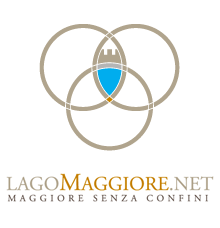
Muralto
Muralto is a Swiss municipality in the Canton Ticino that rises on the western shore of Lake Maggiore bordering with Locarno, so much so as to form a single built-up urban area. Although it has under 3,000 inhabitants, it is one of the most popular tourist destinations on the Ticinese part of the lake.
Muralto: history
The rich grave goods from the large necropolis discovered in 1936 together with the ruins of a majestic villa with thermal baths and with a commercial forum indicate that Muralto was the most important Roman town in the upper Verbano area.
The first news of the medieval village date back to 1267. The settlement flourished around the castle and the Parish Church of S. Vittore. It’s likely that the village’s name comes from this castle de muroalto (1194). It was probably an ancient Longobardic fortress which, in the 12th century, was entrusted by the bishop of Como to a patrician family who took on its name. Destroyed in the 14th century and later rebuilt as a home-fortress, the castle was seriously damaged by the Swiss in 1531. Today, only three arches remain which are incorporated within buildings from a later period.
Until 1881, Muralto and Orselina (the location of the Sanctuary of Madonna del Sasso) were part of a single administrative unit. The municipal coat of arms bears the castello dei Muralto (Muralto castle) - coloured in red against a white background - and three red lilies.
Things to see in Muralto
The Collegiate Church of S. Vittore is north-east of the train station. It’s one of the most interesting Romanesque churches in the Canton Ticino and was the parish church of Locarno until 1818.
The building has three naves with just as many semi-circular apses and a crypt, which was added later and placed under the choir. Inside is a central wooden ceiling, while the side naves have cross vaults. The original church (an early Christian basilica) was built around 5th – 6th centuries on the ruins of a Roman villa. However, the current church dates back to 1090-1100, but several additions and renovations were made over the centuries. The last renovations (the removal of Neo-Gothic vaults from the middle nave) revealed an important series of Romanesque frescoes (1140-1150) with stories of the Old Testament.
On the side of the bell tower on the south-east corner is a marble bas-relief by M. Benzoni depicting Saint Victor on horseback with a standard bearing the image of the Holy Trinity.
The Church of Santa Maria Annunciata in Via al Sasso and the 17th-century Chapel of San Giuseppe are also worth visiting.

